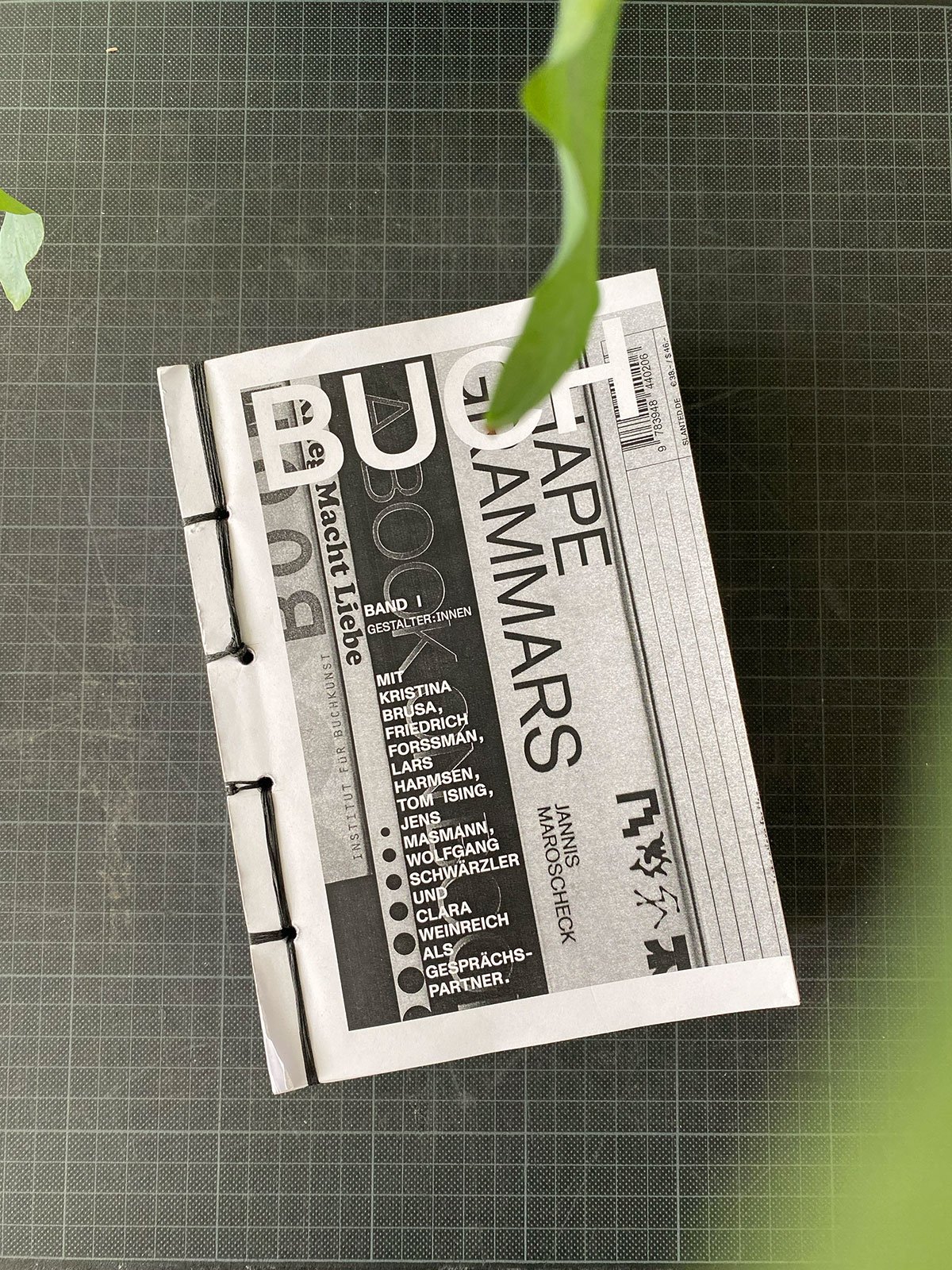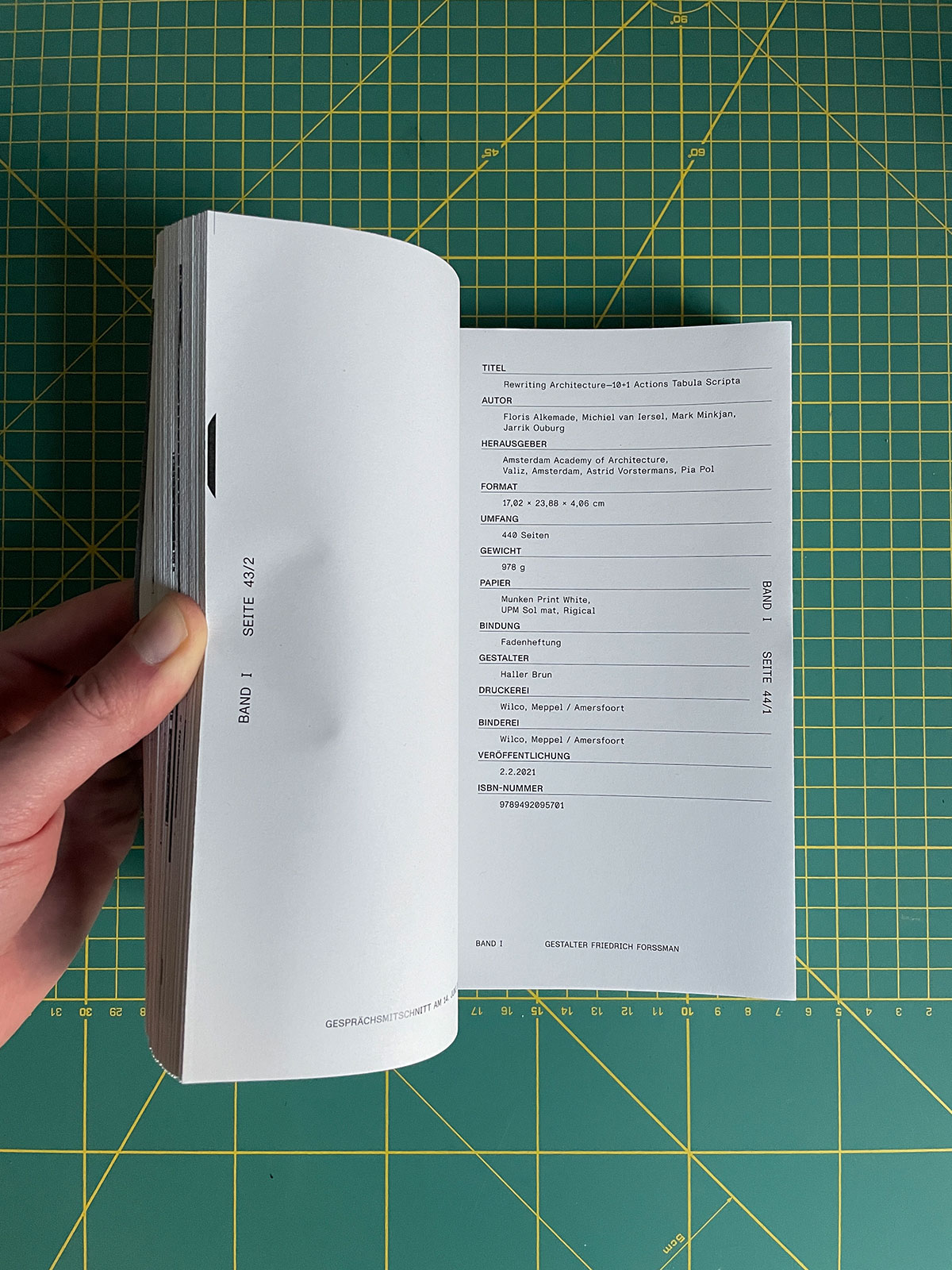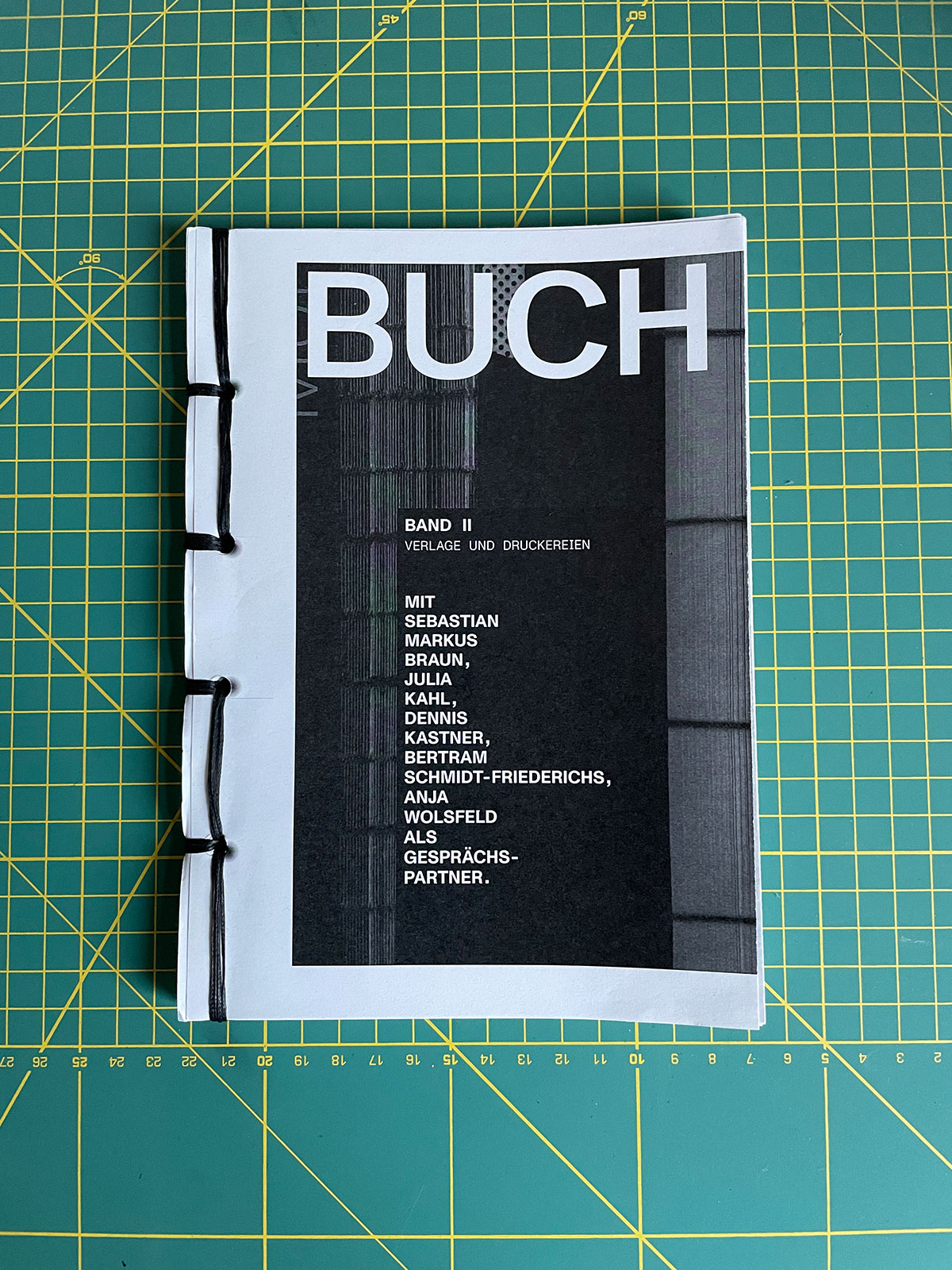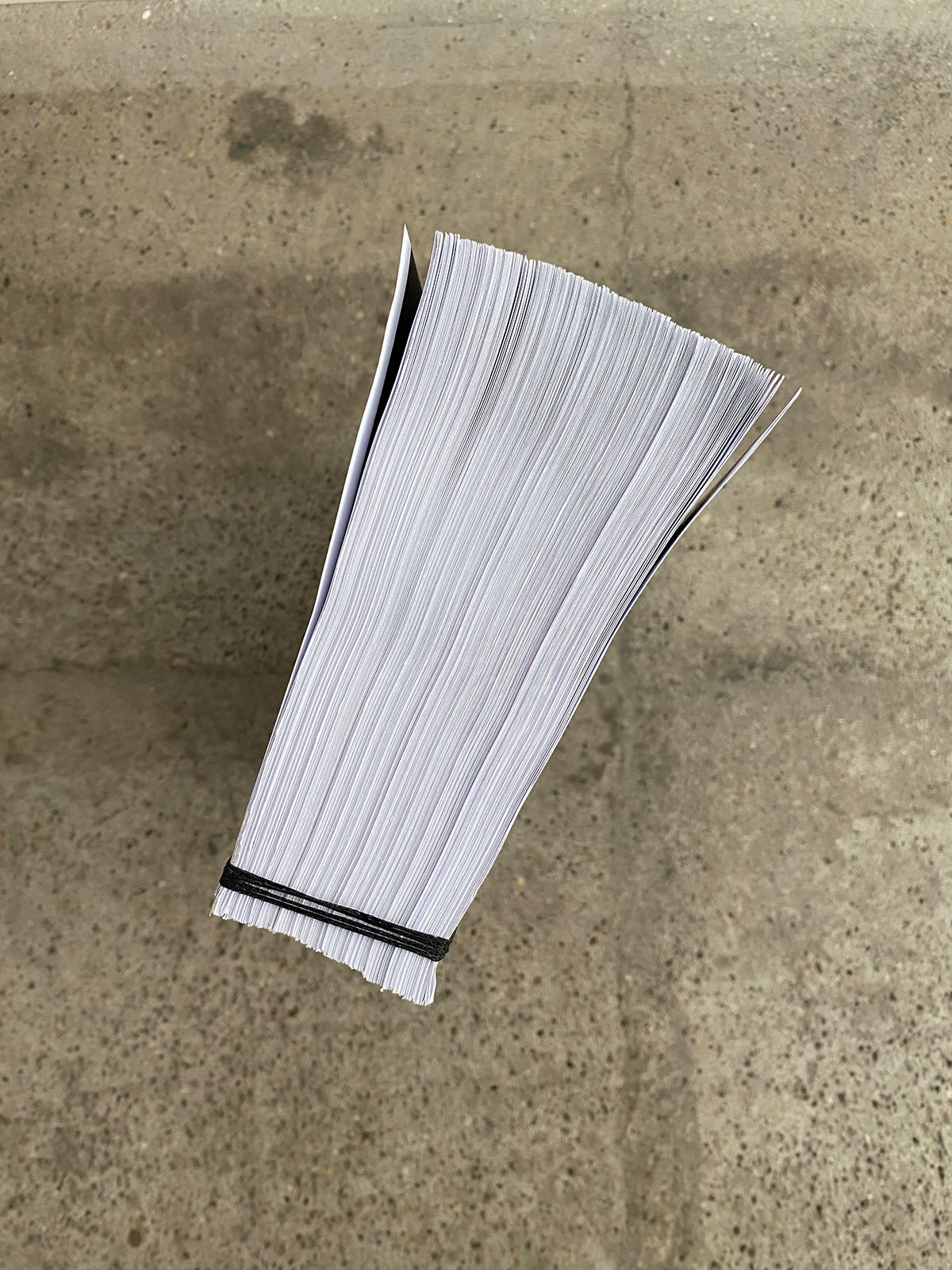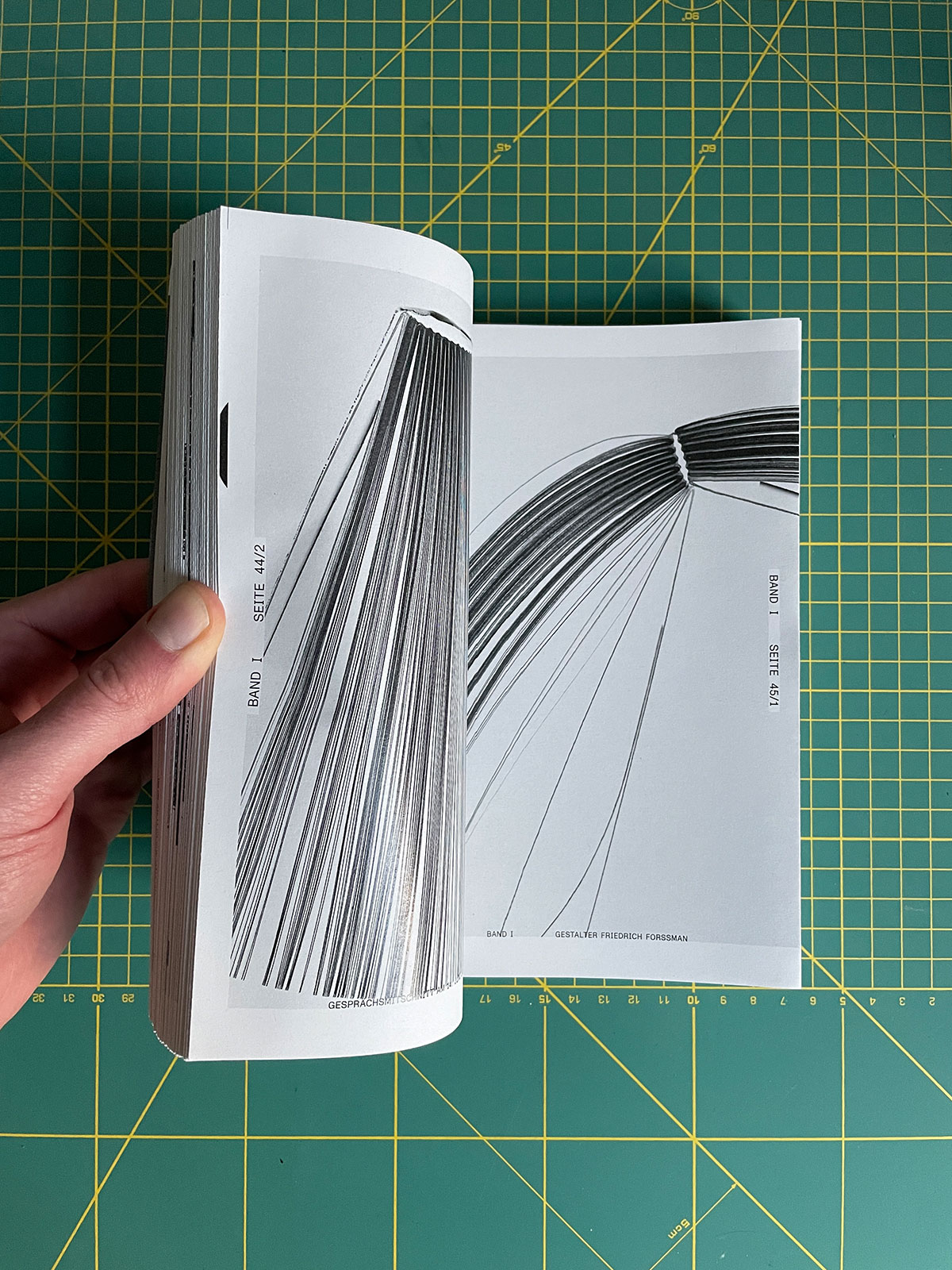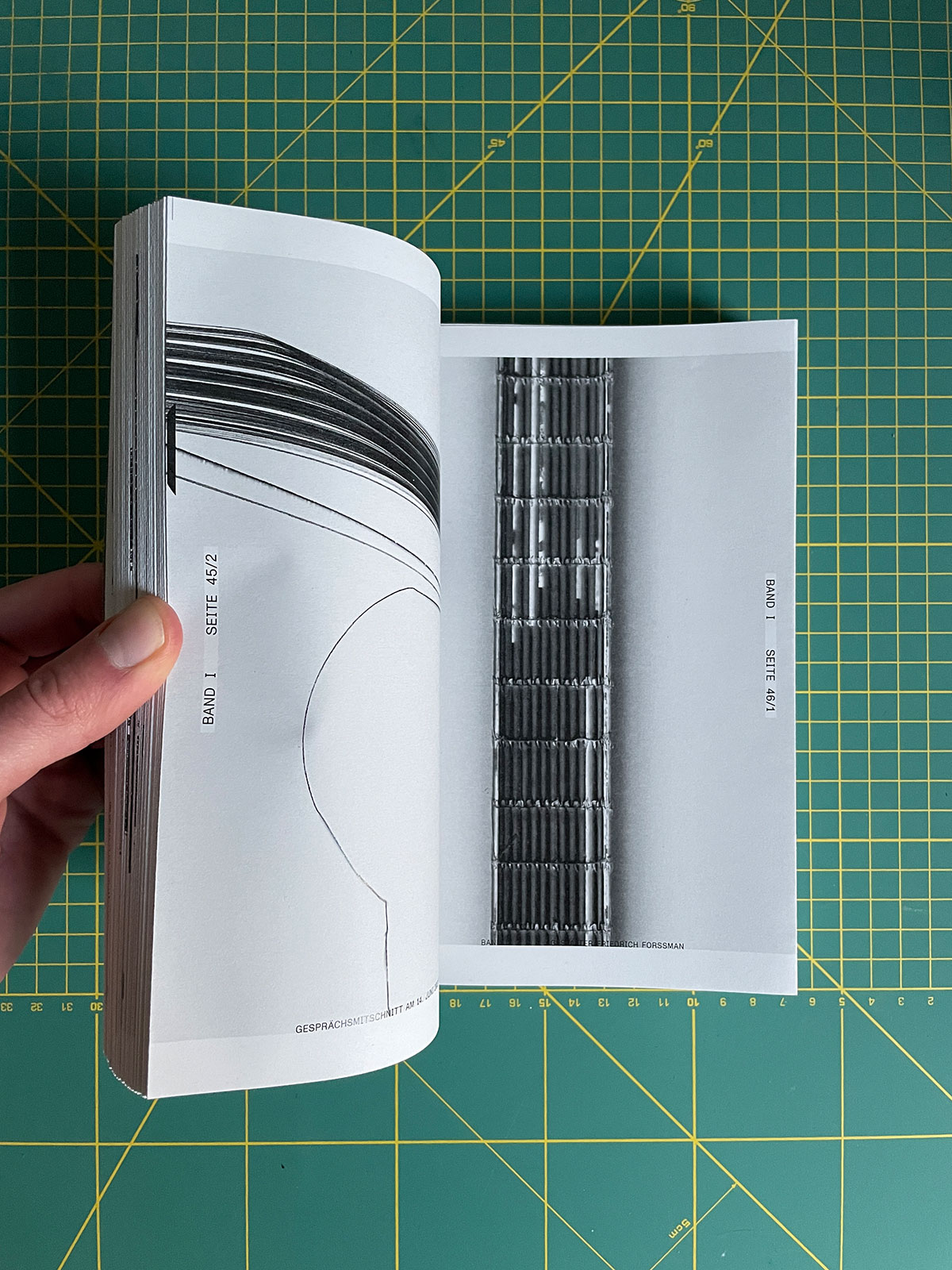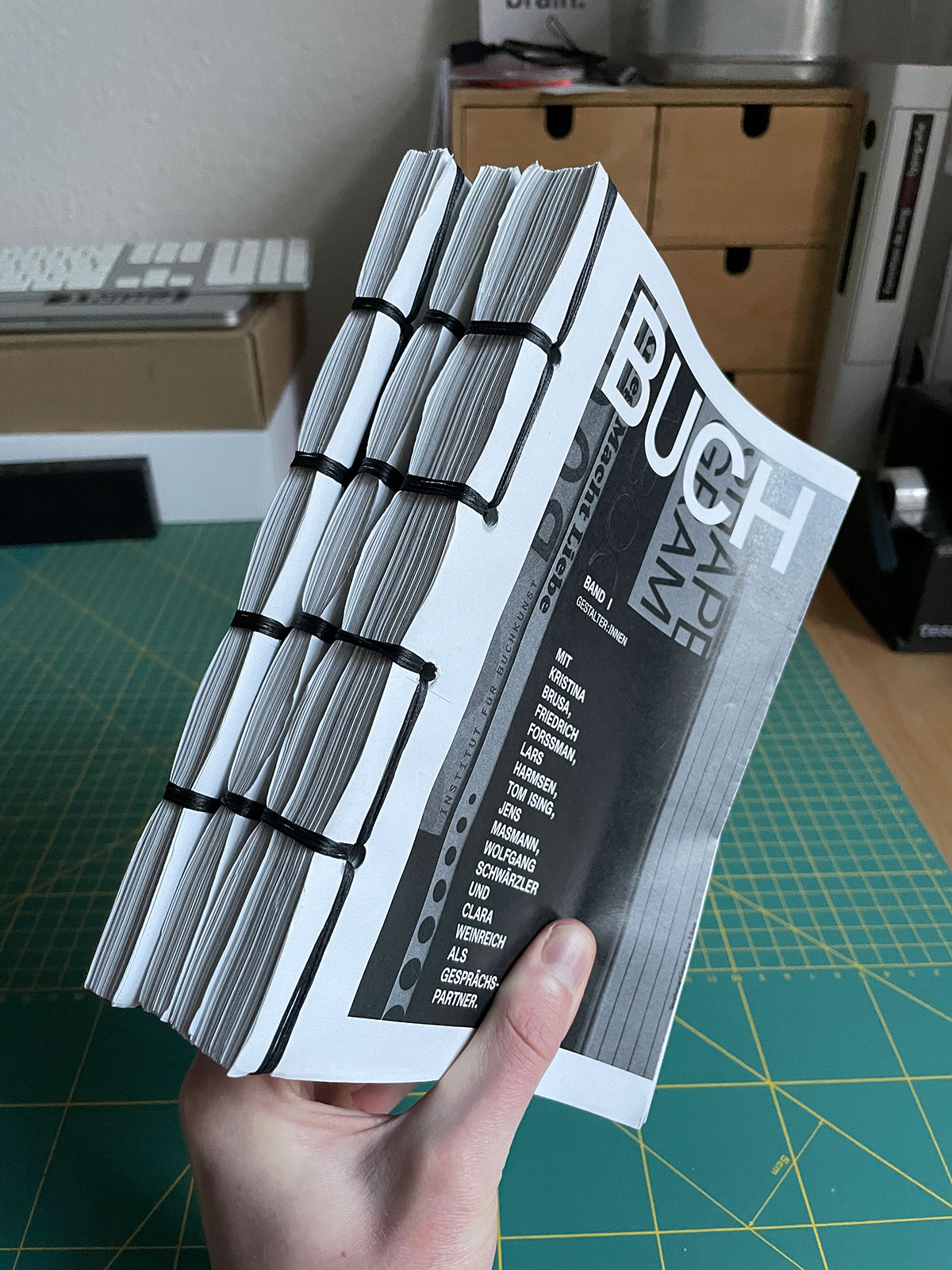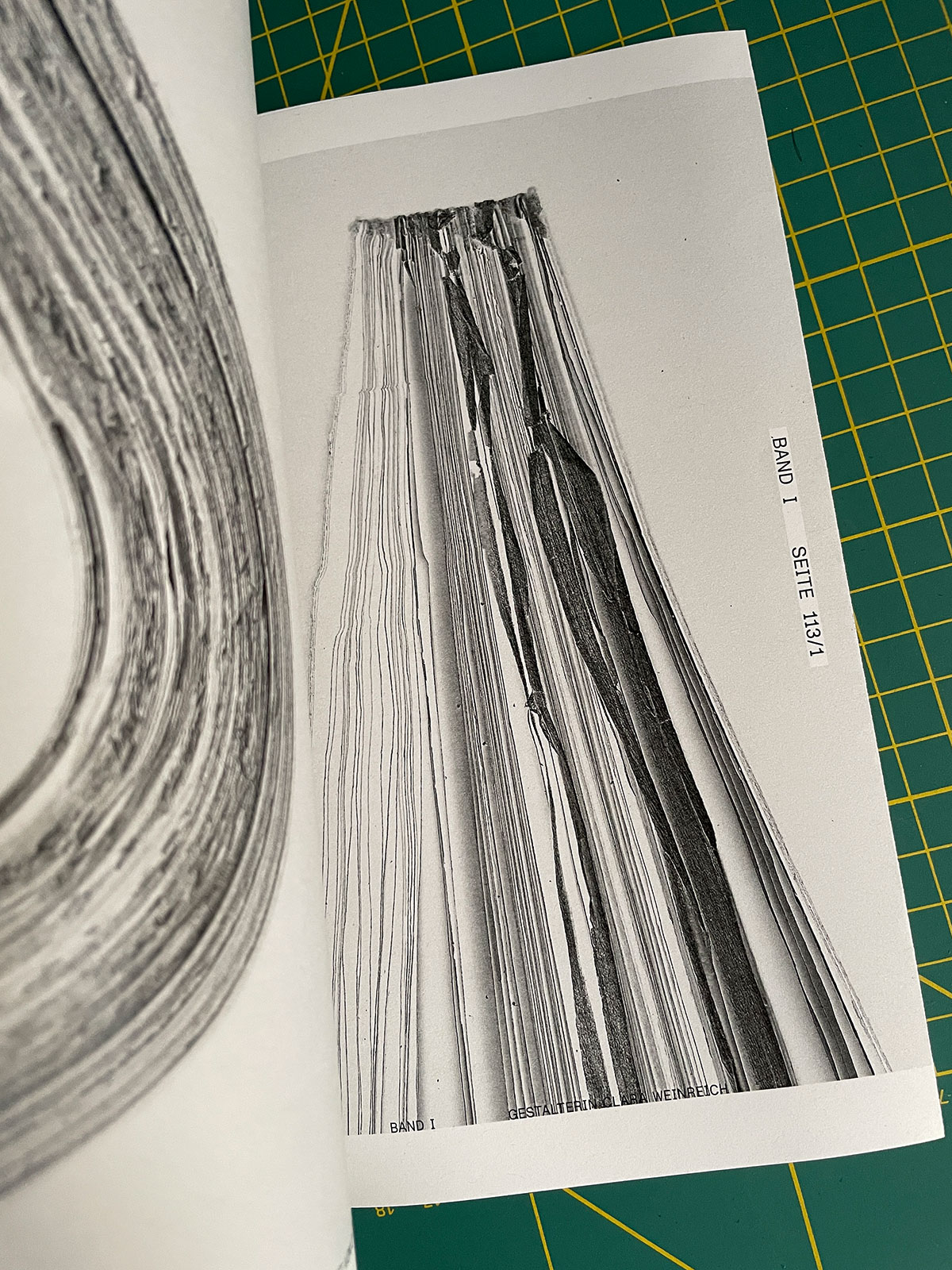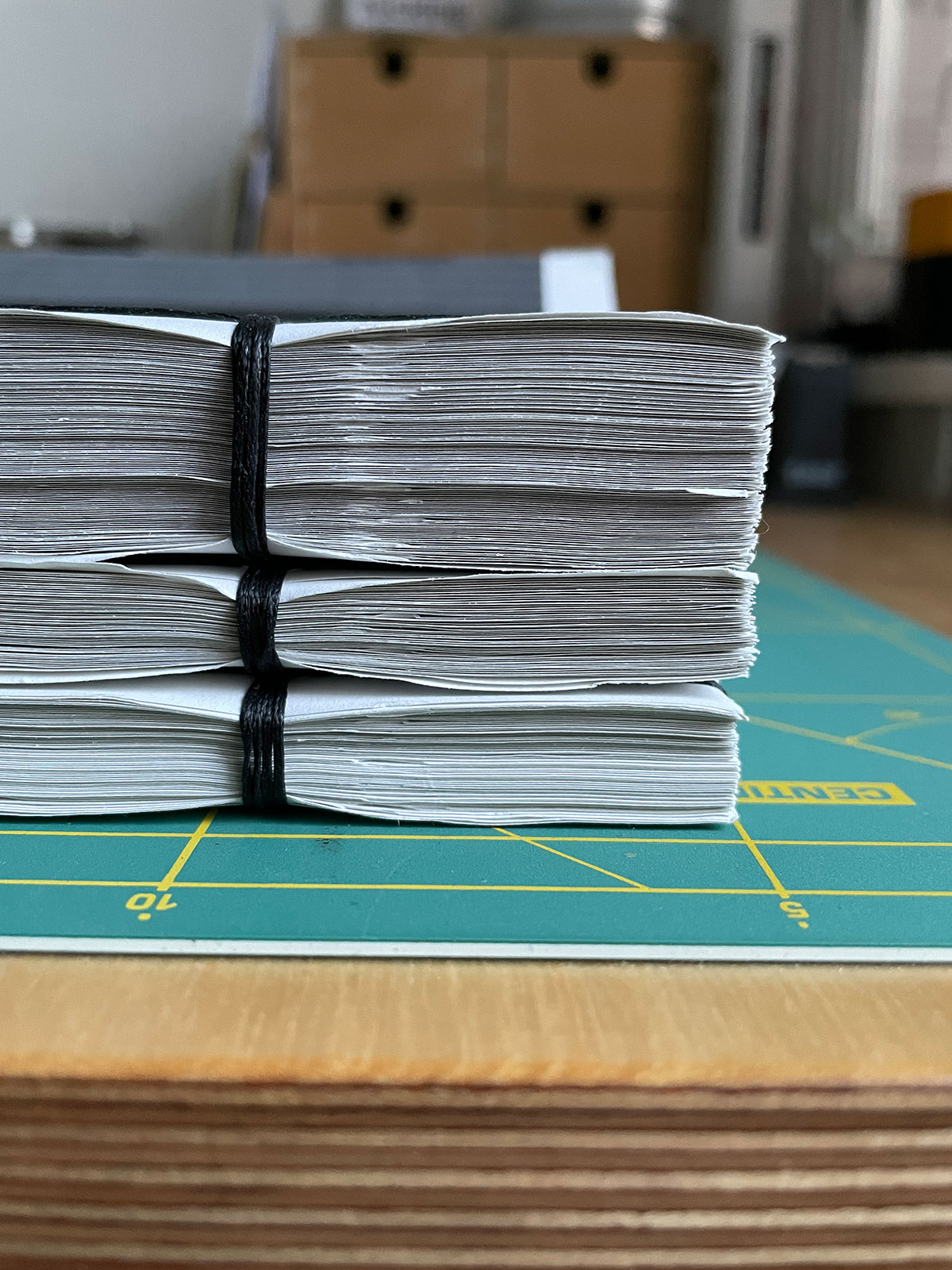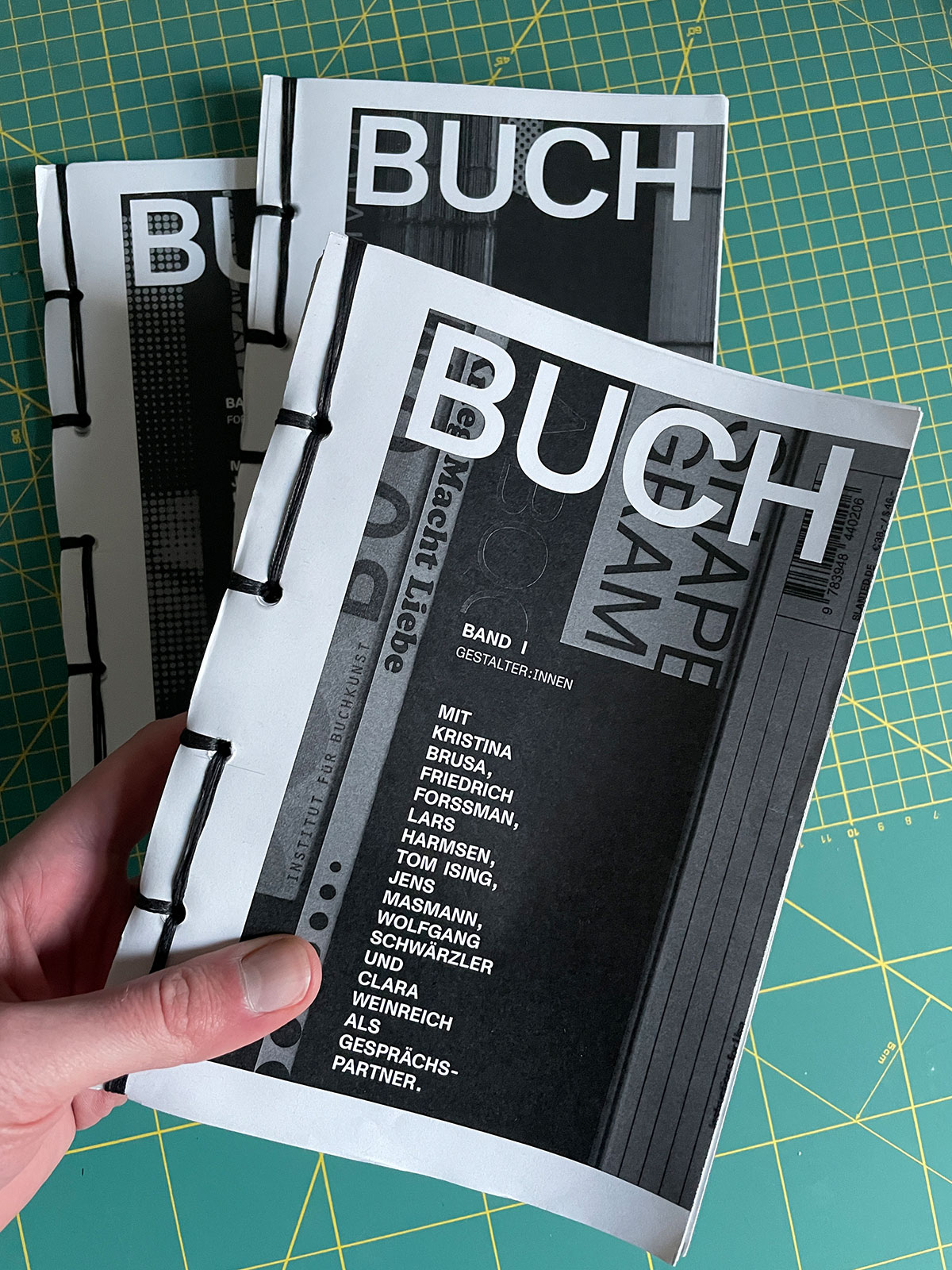BUCH
Designers, Publishers, Printers, and Researchers
In Alexander Staudt’s thesis BUCH for 2021, he dealt intensively with the body of the book. In addition to its conception and design, he initiated an experimental DIY POD PWYW—do-it-yourself print-on-demand pay-what-you-want project on Instagram. The subject of book bodies played an extremely relevant role in all of his design projects throughout his master’s degree.
How will books be designed in the future? How is the body of the book, as a supporting medium, included in concept and design? What role does the body play as a means of telling a story?
These questions are to be examined in this master thesis. Well-known designers, publishers, printers, bookbinders, and researchers were asked how they deal with the design of the book body. In discussions, an attempt was made to discuss the different approaches and ideas of the respondents. The answers were summarized in a three-volume book, which should be made accessible to students in particular as a printable PDF for self-printing and binding. The result is a disembodied book whose body will each time take on an individual shape.
The topic of the book body pursued me deeply since Haller Brun’s three-day storytelling workshop at the Augsburg University of Applied Sciences in November 2019. The workshop dealt with the structures, dramaturgy, storytelling, navigation, haptics, and physicality of books.
In three days they were supposed to prepare a book pitch from given material, which mainly deals with the things mentioned. Since then it kept Alexander very busy how the content can be reproduced, supported, and reinforced with even the simplest interventions in the body of the book. An example is the book Rewriting Architecture—10 + 1 Actions Tabula Scripta designed by Haller Brun. There the tabular form was incorporated into the body of the book by a clever change of paper between thin and cardboard-like paper. The book was thus divided into 10+1 chapters. Here the content was placed on the body of the book by very simple and extremely clever means.
In the book A Book on Books by viction:ary, Alexander came across a quote from Haller Brun that gave him a place to start with this thesis: “Digital content is ephemeral and can always be adapted or replaced, whereas the content of a book is there to stay. Not everything has to be made into a book, but if something is going to be made into a book, it’s a much more conscious decision today, and thus increases the value of the book. That’s why it’s also important to keep thinking about the analog properties and qualities of a book in the design process from the beginning.”
There is no golden rule for book body design. Of course, everyone knows the standardized book, mainly from the field of fiction. Nevertheless, this often has nothing to do with serious book design, but is the cheapest and mostly fastest way to produce a book. But still, there is nothing reprehensible about that in and of itself. These books are just as valid as others. I still remember a bunch of books by its body when I think of the story. However, this is not what’s called serious book design which deals with the content, creates a concept for its design and tries to make the book more than the sum of the individual parts such as content, layout, typography, image design, and the physicality of the book.
The book body is made up of everything that can be communicated with haptics, materiality, and handling. In serious book design, a lot of thought goes into this right from the start.
The body of the book is always the result of a choice between different materials. Decisions have always been made.
The resulting question for Alexander is: Why do designers, printers, bookbinders, and publishers make these decisions and how do they deal with the topic of book bodies.
The thesis was strictly designed for everyone to be produced at home using strictly no professional material and to immerse oneself in the lovely book-binding process. It can be downloaded right here.
Alexander Staudt is an editorial designer. After completing his bachelor’s degree at the Augsburg University of Applied Sciences, Faculty of Design, Alex studied editorial design for a master’s degree at the Dortmund University of Applied Sciences. Alexander Staudt now works as an editorial designer for studios such as Melville Brand Design, Munich.
